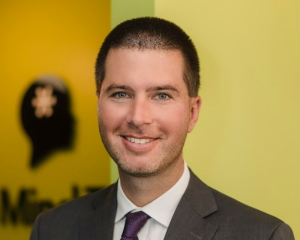This year, as students across Indiana head back to school, more than 10,000 have signed up for the second year of a state tutoring initiative.
A key difference between Indiana Learns and other tutoring programs: It places funding in parents’ hands, letting them choose providers that fit their children’s needs and schedules.
The Mind Trust, a nonprofit organization that supports charter and district-run innovation schools in Indianapolis, administers the program.

How it works: Scholarships are available to students in third through eighth grade who qualify for free or reduced lunch and score “below proficient” in math or language arts on the state’s standardized tests. Families receive $1,000 to spend on English and math tutoring or approved out-of-school academic programs.
Parents can pick a tutoring provider and monitor their fund balances online. The program doesn’t allow them to mix and match different providers, so, according to Mind Trust CEO Brandon Brown, “it’s not a full-blown ESA.”
Who’s involved: The Mind Trust tracked down trusted vendors and community groups across the Hoosier State to provide tutoring in-person and online. Groups must meet a lengthy list of qualifications, get approval from a committee of experts, and send quarterly reports so families can track progress.
- Vetting committee membership is kept under wraps because “we didn’t want there to be a lot of politicking on individual members,” Brown said.
- When we spoke to Brown last week, 47 organizations have provided 20,642 hours of tutoring. They include well-known tutoring centers like Mathnasium and Kumon, a university-based support center, and Boys and Girls Clubs.
Why it matters: Students lost more than a third of a normal school year’s worth of learning when schools closed during the public health crisis. The harm continues to grow. New data show students still lost ground last school year.
Strong evidence suggests tutoring can help stop the slide. But school systems across the country are struggling to find enough tutors. Students aren’t showing up for tutoring sessions. And parents don’t think it’s necessary or aren’t aware of opportunities.
Speading the word: Indiana Learns hopes to enroll 15,000 students. The marketing plan included radio ads and school outreach to families.
- The most effective method to drive sign-ups, according to Brown? Direct mail.
How it’s going: This year, the program expanded to allow schools to serve as providers and deliver the tutoring onsite while students are in class. Research shows this can make tutoring more effective by making it easier for students to participate consistently.
Early results appear positive, Brown said. However, because the program started last fall, it will likely be next year’s annual assessment results that will be able to show its full impact.
Paying it forward: Indiana is paying for the $15 million program with non-recurring federal pandemic relief money. Brown said leaders are in early stage talks to finding a long-term funding source.
“I think state leaders are clear-eyed that this going to take a long-term multi-year commitment, and we need to find ways to scale and sustain existing programs that are working.”


